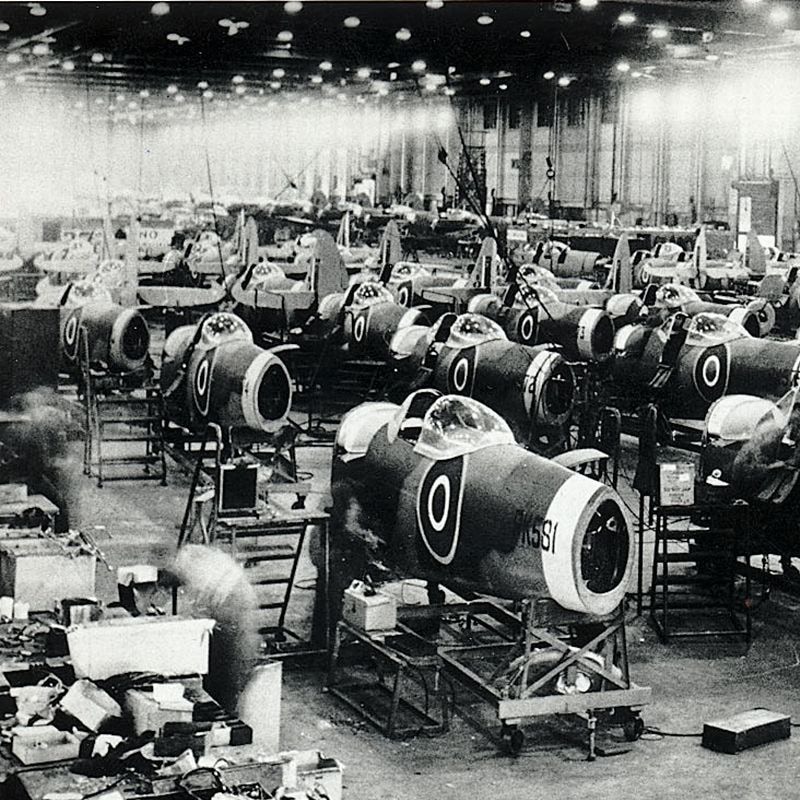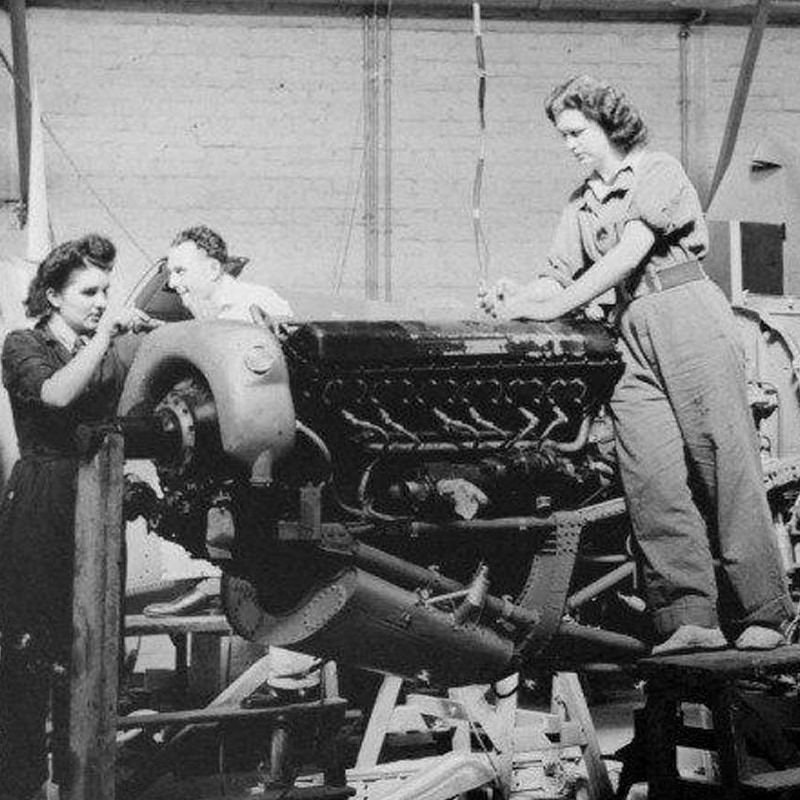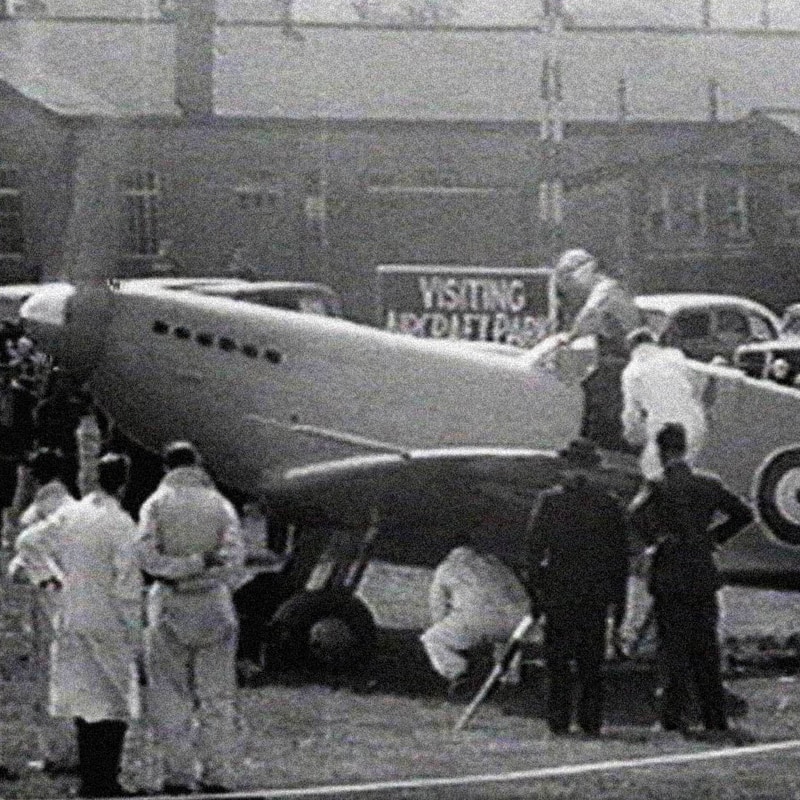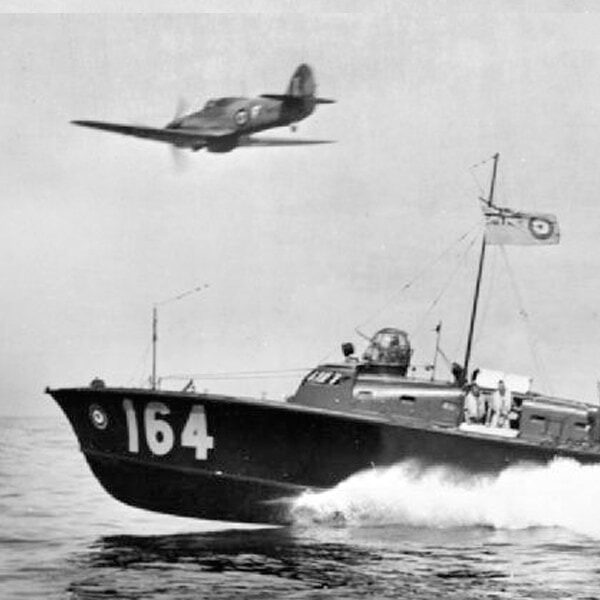THE SPITFIRE FACTORY WORKERS WHO HELPED WIN THE BATTLE OF BRITAIN
The extraordinary story of workers building the aircraft that helped win the Battle of Britain is detailed for the first time in a BBC television documentary.
More than 100 were killed by Luftwaffe air raids that flattened the Spitfire factory in Southampton 70 years ago this month.
But despite the loss of their colleagues and the destruction of the city’s Supermarine workshops, employees found alternative sites within weeks and began producing aircraft around the clock.
Furniture stores, garages, and even a bus depot were commandeered to allow more fighters to be built as the aerial battle with Germany intensified.
The bravery of both the workers and the RAF pilots is told in The South Coast Trail, a BBC programme examining the role of Southampton and neighbouring areas to the cross-Channel aerial conflict.
It also coincides with a campaign, backed by the Sunday Telegraph, for a national memorial to the Spitfire in the city where it was designed and first built.
“ABOUT ONE QUARTER OF ALL THE WORKERS WERE KILLED”
Bill Bull was an 18-year-old sheet metal worker at Supermarine when bomb raids flattened the factory, in the Woolston area, on 24 and 26 September 1940.
The 88-year-old, who still lives a short distance from the site, said: “I am lucky to be alive, lots of my mates were killed. The sirens went and we just sauntered across to the shelter and had a game of cards.
“Then we heard the aeroplane engines. I was the one nearest the door so I looked out and I saw Swastikas so shouted ‘get down quick boys!’ We laid on the floor of the shelter with the bombs crashing down around us.



“The concrete cracked under out stomachs as we lay there. After the planes had gone we began digging the injured out, and bodies.”
About one quarter of all the workers were killed. But despite the loss of life, production was quickly moved to 28 other sites around Southampton as well as Reading, Hungerford, Newbury, Salisbury and Winchester.
A bus depot in Salisbury was one of seven factories where wings and fuselages were built Mr Bull said: “We worked flat out, we knew we had to. The Germans were flying over us every day.
“We could see what was happening in the skies over our head and how important it was to keep building the planes.”
Don Smith, 84, helped build Spitfires in a requisitioned metal works and returned to the building as part of the documentary. He said: “We felt we were part of it as we worked away. Our spirit was with the boys up there.” Squadron Leader Alan Jones, director of Southampton’s Solent Sky museum, said “anywhere with a roof” could be turned into a Spitfire factory.

“It would be hard to imagine it now, having someone turn up and announce your business was being shut down and used to build Spitfires but that’s what they did and everyone just got one with it.”
So many RAF orders were placed that production was spread to additional sites including Castle Bromwich near Birmingham, but design of the plane remained in Southampton.
Readers of this newspaper have also contributed more than £8,500 towards a project to build a memorial to the aircraft.



